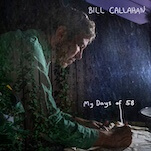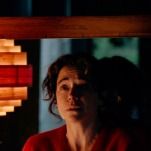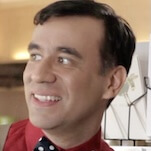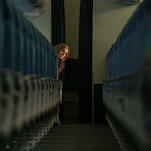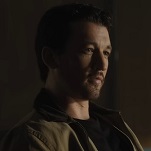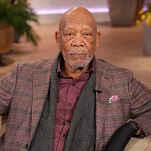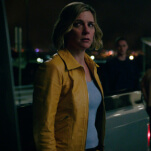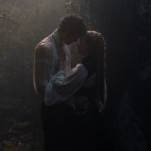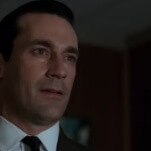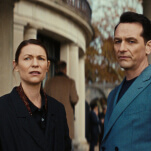There’s almost certainly no horror-movie situation hoarier than a woman trapped alone in an old, dark house, but there’s a reason it remains deathless: It works. Do it right, and the audience is right there with the heroine, feeling just as scared as she is of whatever dread presence waits just offscreen. Do it wrong, and audiences will want to—or maybe will—shout out all the dumb mistakes she’s making, breaking whatever tension the filmmakers have worked to create. Silent House, a horror film co-directed by Chris Kentis and Laura Lau, gets it right for a good stretch, building the pressure to the boiling point as star Elizabeth Olsen appears to break down onscreen. But once the stumbling starts, it doesn’t really stop until the movie ends.
Kentis and Lau previously teamed up for the effective 2003 film Open Water, which brought a handheld, low-budget aesthetic to a lost-at-sea-as-the-sharks-circle thriller. Now, remaking the 2010 Uruguayan film La Casa Muda, they revive its central gimmick: The film unfolds in real time and appears to have been filmed as a single, uninterrupted take. Anyone looking for cuts will have no trouble finding them, but it’s much to Silent House’s credit that its early scenes should keep even the nitpickiest viewer focused on other matters.
The atmosphere helps. Set in a mold/metaphor-infested lake house whose boarded-up windows keep it dark even as the sun shines outside, Silent House feels creepy even before the creepy stuff starts. Olsen, her father (Adam Trese), and her uncle (Eric Sheffer Stevens) wander around carrying electric torches that make the aging, water-damaged wallpaper look even more unsettling than it would in natural light. Then, shortly after a visit from a childhood friend Olsen can’t quite remember, and while Stevens runs an errand away from the house, Olsen starts to pack up the few possessions worth keeping from her childhood bedroom. Then she hears a violent thump and discovers her dad has disappeared. Left alone, and aware someone else has entered the house, she realizes she has to find her way back downstairs and find a way out, in spite of not having a key to any of the locked doors.
What follows is pretty scary. Kentis and Lau know how to manipulate offscreen space and let Olsen’s moony-eyed vulnerability do much of the work. Olsen is tremendously effective, stopping herself from screaming as she hides beneath a table, and when the situation calls for it, rallying hidden pockets of composure, adjusting her hair, and getting down to the job of staying alive. But what follows the opening volleys of terror proves much less scary. And then, over the course of some loudly telegraphed twists, it turns icky in ways that Kentis and Lau don’t know how to control.
The camera rarely moves away from Olsen over the course of the film’s simulated single take, which is scary, but it also makes the audience complicit in the horror. Ultimately we’re watching Olsen from the perspective of a third party that’s stalking her, and once the film shows its hand, a queasy feeling will probably kick in even for those not already put off by the shaky camera work. There’s probably a graduate thesis to be drawn from this, about what audiences want from horror films, and ways to make viewers uncomfortable with their own voyeuristic desires, but that doesn’t make the thrills any less sour, or the end any less exploitative. (Or worse, dull.) As a technical exercise, Silent House deserves a round of applause, but when did a technical exercise every give anyone nightmares?
For thoughts on, and a place to discuss, plot details not talked about in this review, visit Silent House's Spoiler Space.





